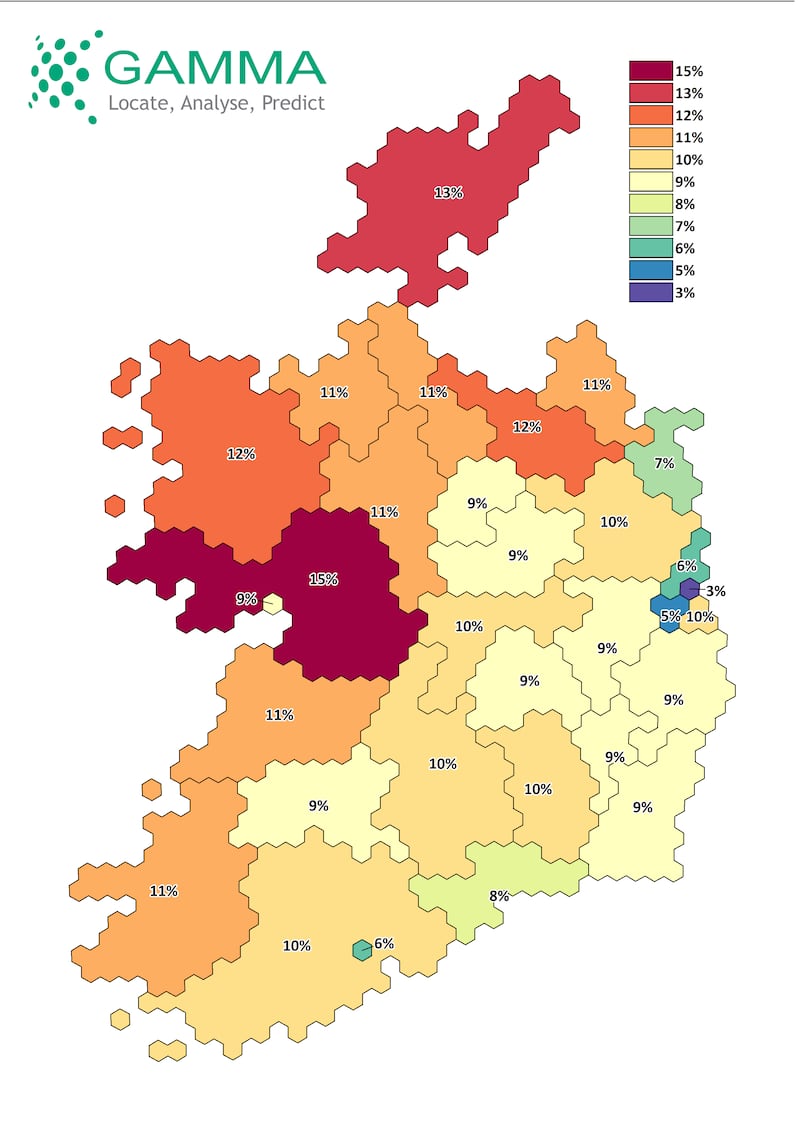The phenomenon of the McMansion is seen as a legacy of the Celtic Tiger. One-off statement houses, typically with cobblelock driveways surrounded by a half an acre of lawn, appeared in every corner of the Irish countryside during the boom years. Now a new category in the 2022 census documenting the number of bedrooms in each home reveals where these so-called McMansions are most likely to be found.
The county with the highest percentage of large homes is Co Galway where 15 per cent of all homes have five bedrooms or more. The national average is 8.6 per cent.
Donegal is next with 13 per cent of all houses containing five bedrooms or more.
The counties with the highest proportion of larger houses are all confined to the counties west of a rough diagonal from Kerry to Cavan. In Co Cavan 12 per cent of all houses have five bedrooms or more. In Kerry, Clare, Roscommon, Leitrim, Sligo and Monaghan more than one-in-10 (11 per cent) of houses have five bedrooms or more.
Wreckquiem review: Pat Shortt is well capable of an audience-pleasing expletive in an adroit performance
Netflix, Prime Video, Apple TV+, Paramount+: 10 of the best new shows to stream in July
Q&A: How are GP shortages affecting the country - and where are they hardest to find?
What will €325,000 buy in Kinsale and Co Kilkenny?
Galway city has the largest number of houses in Ireland with 10 or more bedrooms. The city has 57, in comparison to Dublin city with 55. There are 565 such mansions in the State, according to the census.
Unsurprisingly the places with the smallest percentage of five bedroom houses are urban centres where land is more expensive. Dublin city centre at 3 per cent has the lowest number of five-bedroom houses, followed by South Dublin County Council (5 per cent), Fingal County Council and Cork City (6 per cent) and Co Louth (7 per cent). Affluent Dún Laoghaire-Rathdown bucks the urban trend as 9.1 per cent of houses in the local authority have five bedrooms or more, higher than the national average.

The figures were compiled by Gamma, a location intelligence technology company in Ireland and the UK.
The data also reveals that the number of five-bedroom houses in the State is very much a legacy of the Celtic Tiger era. In the 1990s one-in-10houses built in the State had five bedrooms or more. It rose to nearly one-in-five houses in Galway and Donegal.
Dublin City Council has the highest number of one and two bedroom properties with 43 per cent falling into that category. Along with having the highest number of large houses, Co Galway has the lowest proportion of one and two-bedroom properties (13.1 per cent).
Some 15.9 per cent of homes in the country have two bedroom, 35.7 per cent three bedrooms and 25.7 per cent four bedrooms. One-bedroom households accounted for just 5.5 per cent of households. The number of bedsits has fallen from 3,266 private households in 2016 to 1,659.
The number of households in apartments doubled in the last 20 years from 5.5 per cent in 2002 to 10.4 per cent in 2022, but it is still far below the European average of 46 per cent.
The number of homes owned outright in Ireland without any kind of mortgage increased by 20 per cent between 2011 and 2022 from 566,769 to 679,769 an increase of 112,949. The number of households being owned with a mortgage fell by 51,941.
Gamma lead consultant Richard Cantwell said the fact that 37 per cent of all properties are now owned outright may be down to the ageing population. The average age in the State has increased from 36.1 to 38.8 between 2011 to 2022.
“The maturing population could be the driver of more outright home ownership in certain areas, while increasing population is impacting on the rental market in others,” he said.












